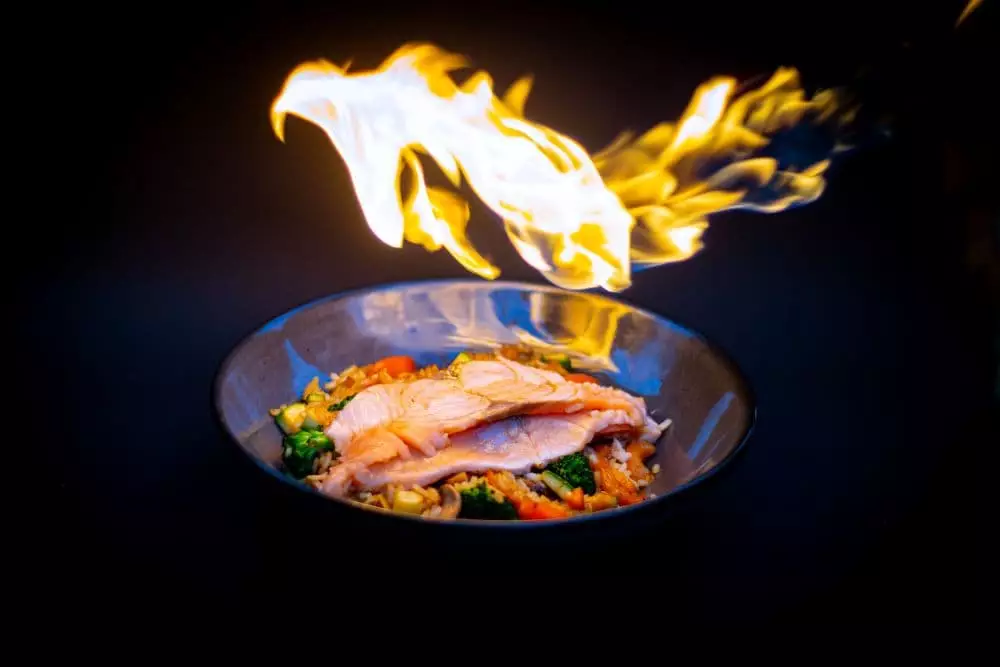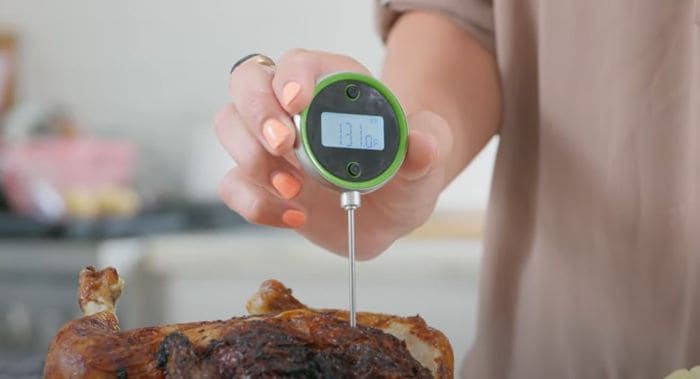
Use Proper Cooking Temperatures to Ensure Safe Food
Cooking is one of the most basic household chores. However, it could be easy to mess up your cooking, especially when you do not get the correct cooking temperature. If food is not cooked correctly, it can lead to various food borne illnesses. With millions of people getting sick due to food poisoning every year, following the correct cooking temperature is crucial to ensure you are consuming safe food.
This article discusses the proper cooking temperatures and the potential consequences of not cooking your food correctly.
Table of Contents
Why Proper Cooking Temperatures Are Important
Table of Contents
Cooking food at a specific temperature is essential to kill any bacteria in raw meat. Such bacteria can cause foodborne illnesses if they are present in food consumed by humans. The harmful microorganisms grow and multiply at 40 to 140 degrees Fahrenheit (4 to 60 degrees Celsius). This is called the “Temperature Danger Zone.”
Furthermore, cooking food at the right temperature is crucial as it can preserve the nutritional value of the food. If you cook food at extremely high temperatures, you could destroy the essential nutrients of the food. But when you cook it at the right temperature, it retains the nutritional value of the food and maximizes its flavor.
The Consequences of Improper Cooking Temperatures
Failing to cook the food at the right temperature can have severe consequences. Consuming raw or undercooked meat, poultry, seafood, and eggs can result in foodborne illnesses. Some of the common foodborne illnesses are E. coli, listeria, and salmonella. Various symptoms of foodborne diseases include abdominal pain, fever, nausea, and vomiting.
However, severe foodborne illnesses can cause long-term health effects like kidney failure, brain damage, and chronic arthritis. Food poisoning can also be fatal. Because of this, you must cook food at the right temperature to ensure you kill harmful bacteria that put people at risk of food poisoning.

How to Check the Temperature of Food
There are various methods for cooking food to be safe to consume. Here are some tips for ensuring food is cooked at the ideal temperature.
1. Use a Food Thermometer
A food thermometer is the most accurate way of determining the temperature. The device can check the internal food temperature, ensuring that you have reached the safe level where any harmful bacteria in your food are killed.
Since different types of food require different cooking temperatures, it becomes difficult to determine when food is done without a thermometer. Therefore, it’s also ideal to refer to a food temperature chart when checking food temperatures to ensure it is cooked correctly.
According to the USDA, the recommended internal temperature for meat, such as pork, beef, lamb, and veal, is 145 degrees F (62 degrees C). The recommended internal temperature for poultry is 165 degrees F (73 degrees C). On the other hand, you must cook fish to an internal temperature of 145 degrees F (62 degrees C).

2. Check the Color and Texture of the Food
A food thermometer is the best and most accurate way of checking the temperature of food while it’s cooking. But another way you can check if the food is safe to eat is to look at the color and texture of the food.
For example, raw red meat is usually pinkish or red in color. When the food is cooked, it becomes brown. The meat should also feel firm, not mushy.
With fish, the raw meat is still shiny and translucent. But when fish is cooked, it becomes opaque and flakes easily.
3. Avoid Cross-Contamination
When cooking raw meat or seafood, one thing that you should be wary of is cross-contamination. Even when food is cooked to the right temperature, cross-contamination with raw meat can transfer harmful bacteria.
You must avoid cross-contamination during the preparation process. Ensure you have separate boards for raw meat and vegetables. Never place raw and cooked meat on the same plate.
4. Follow the Recommended Cooking Temperatures
The best way to ensure that food is safe is to follow the recommended internal temperature. Here are some of the essential guidelines to remember:
- Meat – The ideal cooking temperature for meat, such as pork, beef, and lamb, is 145 degrees F (62 degrees C). If you’re cooking ground meat, the safe internal temperature is 160 degrees F (71 degrees C).
- Poultry – Poultry meat, such as chicken and turkey, must reach an internal temperature of 165 degrees F (73 degrees C) to be safely consumed. The recommended internal temperature applies to all parts, including the wings, breasts, and thighs.
- Seafood – You must cook seafood, such as fish and shellfish, to an internal temperature of 145 degrees F (62 degrees C). Visually, the flesh of the fish must be opaque and flaky in appearance.
- Eggs – Ensure you cook eggs until the white and yolk are firm. When the yolk is not runny, it’s safe to eat. Also, you should avoid eating food with raw eggs. You can reduce the risk of foodborne illnesses by using pasteurized eggs.
- Leftovers – Be extra careful when reheating leftover food. Ensure you reheat food until it reaches 165 degrees F (73 degrees C). Avoid leaving leftover food in the temperature danger zone for a long time.
Whether you are cooking raw meat or leftover food, it is essential to use a food thermometer. This kitchen tool removes any guesswork from the cooking process and ensures the food is safe to consume.
The Bottom Line
Proper cooking temperatures serve as a guideline to ensure the safety of the food you eat. Safety is superior to taste, which is why you should cook food at the right temperature. If you don’t cook food correctly, you could risk causing foodborne illnesses that could lead to hospitalization or even fatality.
Aside from using a thermometer to check the temperature of the food during and after cooking, you must also follow food safety practices to avoid cross-contamination. Following these correct cooking practices will ensure you enjoy a safe and nutritious meal.
Discover Other ChefsTemp Products
Discover more recipes and learn kitchen tricks by joining our cooking family on Facebook.
You may also like:















